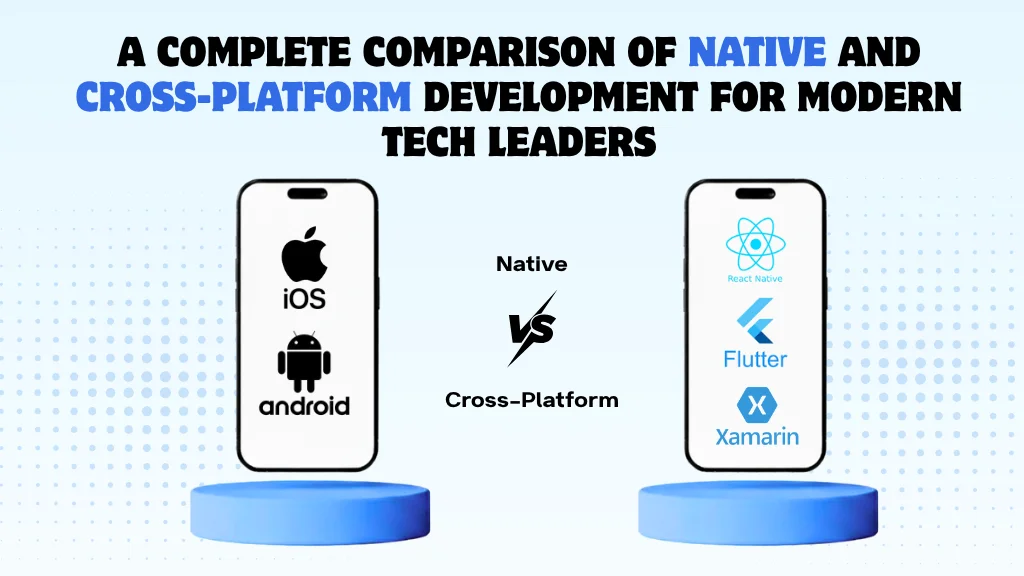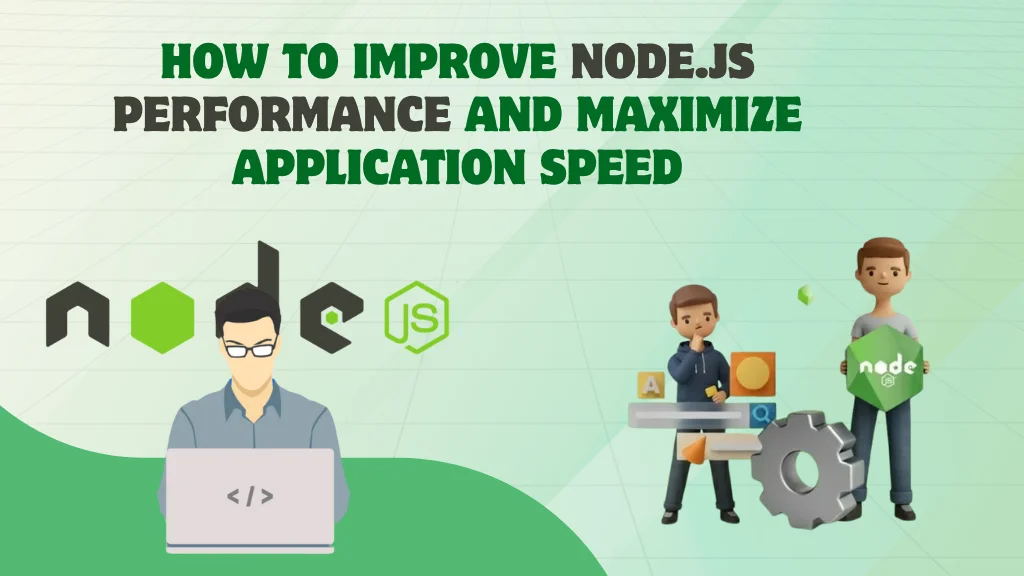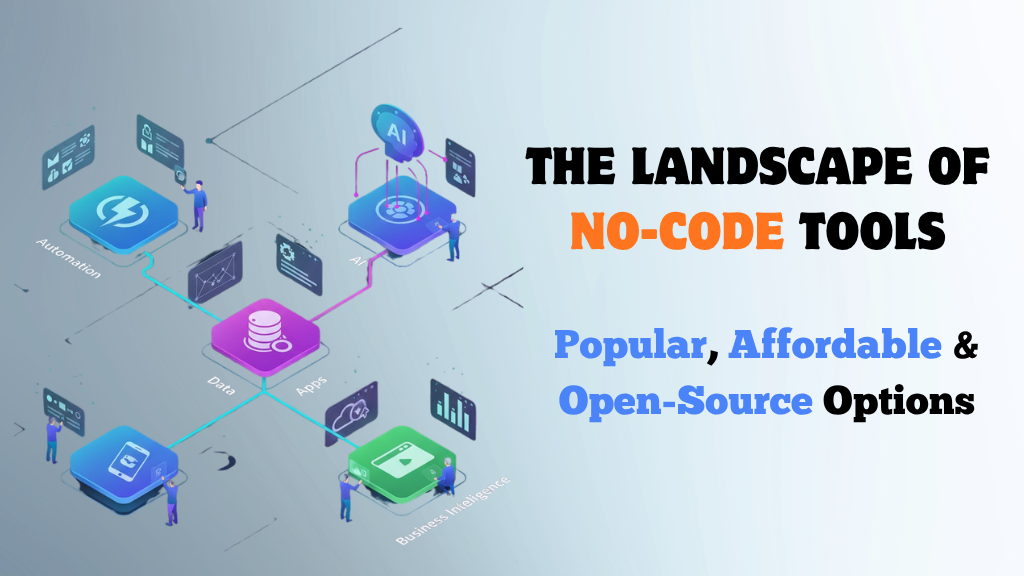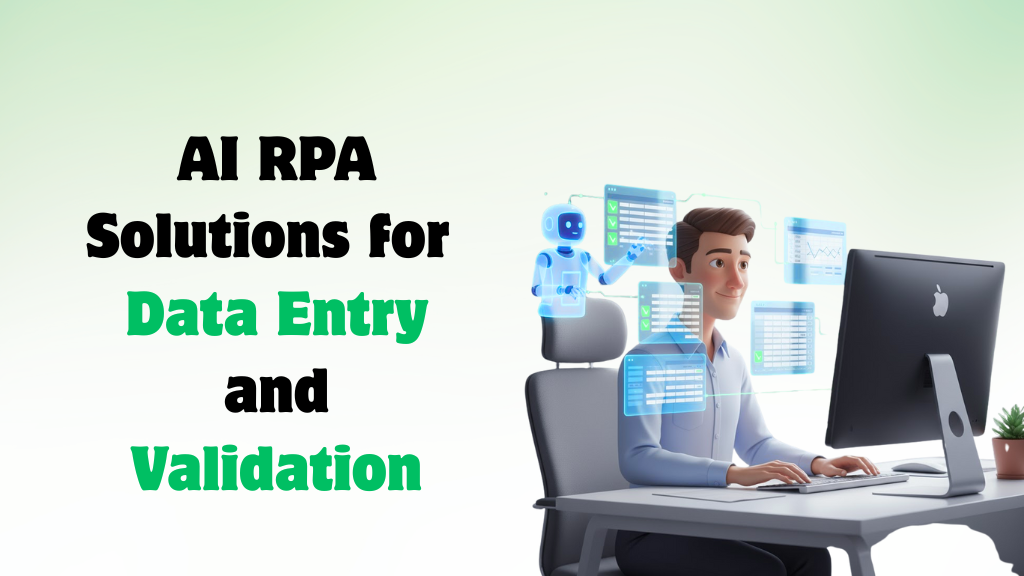Think about how much time your staff spends merely moving numbers around—typing invoices, reviewing entries against each other, and resolving little mistakes. It adds up quickly. Every hour spent entering or checking data by hand is time lost to delays, errors, and work that no one wants to undertake.
Robotic Process Automation (RPA) helped us get started by getting rid of some of the work that we had to do over and over again. But those bots don't always know what to do when the data isn't clean or when each document looks a little different.They still need a someone to step in.
Now think about how fast that would be with real brains. That's what AI-powered RPA can do. It can do more than just copy and paste; it can read documents, analyze the context, and check facts. AI and RPA work together to make messy, time-consuming tasks into seamless, dependable workflows.
In this post, we'll talk about how this combination is changing the way we enter and check data, from processing invoices to updating CRM systems. We'll also talk about how Python and recent AI models make all of this feasible. We'll also talk about some things we've learnt and explain how Moltech helps teams go from doing things by hand to using smart automation that really works.
AI and RPA in Simple Words
Think of RPA as a pair of hands that always work and never get weary. It pushes buttons, fills out forms, and moves data from one place to another — just like a person would, but faster and without losing focus.
Now picture giving those hands a brain. That's what AI is for. It can read an invoice, figure out what the numbers represent, find faults, and make modest choices on its own.
When you put them together, work stops feeling like a machine and starts feeling like a person. The system doesn't just do what it's told; it knows what's going on.
A few things have to work together for that to happen:
- RPA : handles the normal tasks that need to be done in CRMs and ERPs.
- AI :does the thinking by reading texts with OCR, cleaning up data, testing to see if things make sense, and learning from each run.
- Digitization : converts jumbled PDFs or scanned files into data that the computer can use.
- People : still know what's going on when the system isn't sure.
- They check, fix, and in doing so, help the AI learn for next time.
This makes a big difference. You don't need predefined templates or strict workflows anymore;
the system can manage a range of tasks. It's not enough to just enter data; it has to be checked.
Instead of bots that break when an interface changes, you get flexible, context-aware automation that stays working.
RPA does the task, plain and simple. AI helps it do things in a smart way.
They work together to make the boring, error-prone part of entering data into something that is rapid, consistent, and trustworthy.
How AI and RPA Make Decisions , Check Facts, and Make Things More Accurate ?
AI doesn't merely read documents; it gets what they mean.
When you combine OCR and intelligent parsing together, scanned PDFs or invoices from diverse vendors become clean, structured data that software can exploit.
The AI gives each field it extracts a confidence score, which tells you how sure it is about what it found.
Your team doesn't have to double-check everything because only the items with low confidence are indicated for review.
This means they can spend their time where it actually counts.
Validation That Makes More Sense
AI checks the data in the background as soon as it is collected.
It can check values against purchase orders or GRNs, make sure supplier names are correct, fix address forms, and even check tax codes on its own.
The system can alert possible duplication before any payments go out if two records look too much alike.
This saves time and danger.
Making Better Decisions in Context
AI also helps us understand the big picture. Machine-learning models can find outliers, such as a shipping cost that is four times greater than normal or a vendor sending bills from a location that hasn't been approved.
The AI doesn't just give you a long list of statistics;
it also tells you what's wrong and why, so reviewers can act swiftly with all the information they need.
Adding AI-based validation to current RPA systems has lowered the number of manual reviews from 40–60% to less than 10% in just a few weeks in real-world situations. That's not magic; it's superior exception handling and confidence scoring at work.
That's not magic; it's superior exception handling and confidence scoring at work.
- Let AI do the reading and thinking, and let RPA perform the work.
- They work together to make automation more than just following rules; they make it something that really works and can grow.
- You may grow automation without putting too much stress on your team by using confidence thresholds and tailored exception queues.
- Instead of fixing things after they go wrong, you start validating them before they happen, which cuts down on mistakes, rework, and stress in all of your processes.
Practical Use Cases That Pay for Themselves
- Invoice Processing in Finance
- If you've ever worked in finance, you already know how painful invoice entry can be.
- It's slow, repetitive, and even the smallest mistake can throw everything off.
- You fix one line item, and another one breaks. We've seen teams spend entire days doing three-way matching — invoice, PO, GRN — just to keep the books clean.
- The problem gets worse when every vendor uses a different invoice layout. Those old OCR templates just can't keep up.
- With AI and RPA together, that headache goes away. The AI reads the document, figures out what kind it is, and pulls out everything that matters — vendor name, PO number, tax details, even each line item.
- Then RPA takes over. It posts the entries into the ERP, matches them automatically, and sends them for approval without anyone touching a single cell.
- A small validation layer checks for duplicates or wrong tax logic and flags only what needs attention.
- The result? What used to take two or three days now takes a few hours.
- Error rates drop every week because the system keeps learning from the corrections your team makes.
- Finance folks finally get to focus on what actually matters — contract terms, supplier risks, and strategy — not data entry.
- CRM Updates in Sales Operations
- Most sales teams fight with messy CRMs. There's always a duplicate account, wrong contact number, or half-filled lead form that throws off the forecast.
- Someone always says, "We'll clean it next quarter," but it rarely happens.
- AI fixes that quietly in the background. It reads emails, forms, and meeting notes, and extracts names, companies, and other key details.
- It even spots when two records probably belong to the same company by comparing names, domains, and addresses.
- RPA bots then update the CRM, clean up duplicates, enrich missing data from approved sources, and trigger reminders or follow-ups.
- It sounds simple, but it changes everything. Salespeople stop wasting time fixing data and start doing what they do best — selling.
- And with accurate data, managers finally trust the reports they see every morning.
- Everything stays traceable, so compliance teams are happy too.
- Document-Heavy Onboarding (KYC or Vendor Setup)
- Onboarding is one of those processes everyone underestimates until they do it.
- You're chasing IDs, certifications, contracts, and bank letters — all in different formats.
- One typo in an account number can hold things up for days. It's slow, frustrating, and expensive.
- Here's how AI and RPA make it bearable. AI reads and understands those documents — it extracts details, checks names and addresses, and makes sure they match what's in your records.
- RPA then uploads everything into your onboarding system, attaches verified files, and routes it for approval automatically.
- So what used to take hours now happens in minutes.
- No more back-and-forth emails, no missing paperwork, and no onboarding delays.
- You can bring in more vendors or clients without needing more people — and everyone involved breathes a little easier.
In short, these aren't futuristic ideas — they're the kind of automation projects that pay for themselves in a matter of weeks. They don't just save time, they give people their time back.
A Technical Look with Python RPA Bots
Why Python for AI + RPA Use?
When it comes to building intelligent automation, Python is just like a kingmaker.
It has mature, enterprise-ready libraries for OCR, NLP, and data validation — everything you need to teach a bot how to read, understand, and act on information.
It also comes with solid RPA frameworks that can plug straight into ERP and CRM systems without much fuss.
Using Python across the entire automation process — from reading documents to posting data — keeps things simple.
There's no context switching between tools, no patchwork of scripts to maintain.
That means fewer moving parts, faster delivery, and way less time wasted debugging across multiple platforms.
A Simple Workflow
Let's see how it all flows in a real setup:
The bot picks up files like PDFs, emails, and scanned invoices from a watched folder or mailbox.
- Document Digitization:
OCR converts those images into readable text and figures out what kind of document it is. - AI Extraction:
Machine learning or large language models pull out structured data such as vendor name, invoice number, and totals.
The data gets checked against known records, and each field gets a confidence score based on business rules. - Orchestration:
Python RPA bots post the validated data into your ERP or CRM, update records, and log results. - Exceptions:
Anything the AI isn't sure about goes to a person for review.
It requires human feedback, which then helps the system learn and improve next time when it runs again.
This is how automation stops being a "macro on steroids" and starts feeling like an actual digital coworker.
A Quick Python Example
Here's a stripped-down snippet that connects OCR, field extraction, validation, and posting — all in one place:
1
2
3
4
5
6
7
8
9
10
11
12
13
14
15
16
17
18
19
20
21
22
23
24
25
26
27
28
29
30
31
32
33
34
35
36
37
38
39
import pytesseract
from PIL import Image
import re
def ocr_text(image_path: str) -> str:
img = Image.open(image_path)
return pytesseract.image_to_string(img)
def extract_invoice_fields(text: str) -> dict:
vendor = re.search(r'Vendor:\s*(.*)', text)
invoice_no = re.search(r'Invoice\s*#:\s*(\S+)', text)
total = re.search(r'Total:\s*\$?([\d\.,]+)', text)
return {
"vendor": vendor.group(1).strip() if vendor else None,
"invoice_no": invoice_no.group(1) if invoice_no else None,
"total": float(total.group(1).replace(",", "")) if total else None
}
def validate(fields: dict, master_data: dict) -> tuple[bool, list]:
errors = []
if not fields["invoice_no"]:
errors.append("Missing invoice number")
if fields["vendor"] not in master_data["vendors"]:
errors.append("Unknown vendor")
if fields["total"] is not None and fields["total"] <= 0:
errors.append("Invalid total amount")
return (len(errors) == 0, errors)
def post_to_erp(fields: dict):
print(f"Posting invoice {fields['invoice_no']} for {fields['vendor']} with total {fields['total']}")
if __name__ == "__main__":
text = ocr_text("invoice_scan.png")
fields = extract_invoice_fields(text)
ok, errs = validate(fields, {"vendors": ["Acme Corp", "Globex"]})
if ok:
post_to_erp(fields)
else:
print("Route to human review:", errs)
It's a simple demo — but it shows how easily Python ties everything together.
In real-world systems, you'd have models doing smarter extraction and validations, but the principle remains the same.
What Happens in a Production System
In a live automation environment, there's a lot more happening under the hood:
- LLM-based extractors use structured prompts and JSON schemas to make sure outputs stay consistent.
- Confidence scoring lets the system retry extraction with alternate OCR settings if document quality is poor.
- Security features — secrets management, access controls, and audit trails — ensure compliance and traceability.
- Queues handle exceptions and track SLAs so nothing slips through the cracks.
- Observability dashboards track throughput, touch rates, and first-pass yield, helping teams spot issues before users do.
It's not just automation — it's managed intelligence.
Important Points
Python gives teams the flexibility to build the entire intelligent automation stack — OCR, AI models, RPA bots, and validation — all in one language.
That simplicity saves time, keeps systems maintainable, and makes scaling far easier.
And remember, it's not only about the model. Guardrails like validation rules, schema checks, and audit logs are what turn an automation pipeline from a working demo into something a business can truly trust in production.
How Moltech Gives Your Business AI and RPA That Works ?
We don't simply construct bots at Moltech; we make solutions that make work easier, faster, and smarter.
We use AI-powered validation procedures and Python/. NET-based RPA to turn a lot of documents into clean, accurate data.
We assist teams go from manual entry to smart and intelligent automation without breaking everything that already works — from processing invoices to cleaning up CRM.
Our goal is simple: not more bots, but results that can be measured, including higher accuracy, faster judgments, and less labor that needs to be done again and over again.
What We Give
- Digitizing Documents and OCR
We help businesses turn scanned documents, PDFs, and paper forms into organized, searchable data.
Each field comes with a confidence score that shows how dependable it is.
No more guessing what is right or going through folders. - AI Extraction and Checking
We use AI models (LLMs and machine learning) and good business logic in our applications.They examine the extracted data against your master records, mark any problems like tax or complete discrepancies, and make sure that every outcome can be checked and explained.
- Bots for Python RPA
We make automations that really work. Our bots connect directly with your ERP, CRM, and bespoke apps using Python's sophisticated RPA frameworks.
They are quick, stable, and easy to keep up with. - Reviews with a Human in the Loop
There are some things that shouldn't be done automatically. We make exception queues and SLA -driven procedures so that when people need to become involved, it's fast, obvious, and written down.
Every action may be tracked for compliance and audit. - MLOps and Observability
Our dashboards provide you metrics like first-pass yield, touch rate, and model drift in real time.
Model updates with no downtime ensure that the system keeps learning without stopping your work. - Governance and Security
Strict access restrictions, masking, and compliance-ready logging keep sensitive data safe.
This gives peace of mind to people in banking, healthcare, and other regulated fields.
Where It Helps Right Away
- Money
With three-way matching and duplicate protection, you can automate the processing of invoices, credit notes, and vendor onboarding.
Teams close books faster, make fewer mistakes, and have more control over cash flow. - Operations for Sales
Better judgments are based on clean, reliable CRM data. We assist sales teams focus on relationships instead of cleaning up data by getting rid of duplicates, updating contacts from emails and meeting notes, and automatically starting follow-ups. - Logistics and Operations
Make it easier to take claims, process orders, and check evidence of delivery.
Our solutions take care of untidy papers, pull out important information, and check data before it gets to your system — which cuts down on rework and turnaround time.
Conclusion: Don't let your data work for you; make it work for you.
AI + RPA isn't just about automating keystrokes; it's about making your data work for you.
It all makes sense when AI conducts the reading and reasoning and RPA does the execution.
You eliminate mistakes made by hand, speed up turnaround times, and let your staff focus on the important decisions that will help the business grow.
It's time to find a wiser method if you still spend your days entering data over and over, waiting for extended validation cycles, or doing manual checks.
We at Moltech make automation that evolves with you. Our solutions learn, change, and get better all the time.
Want to see how that works?
Check out our Intelligent Automation Services to see how Python-powered RPA with AI validation may make your finance, sales, and operations workflows easier and allow your employees more time to perform work that counts.







